I came across this and implemented easy to use functions as well as a couple of alternatives/improvements.
Improvements:
- use a periodic interpolation which ensures smooth
- use quadratic interpolation
- now works for only positive points as well
- using an alternative to the deprecated
scipy.interpolate.spline function
Alternatives:
- many different and configurable interpolation schemes
- a rounded-corner convex hull version
Hope this helps someone along the way.
import sklearn.preprocessing
import sklearn.pipeline
import scipy.spatial
import numpy as np
def calculate_hull(
X,
scale=1.1,
padding="scale",
n_interpolate=100,
interpolation="quadratic_periodic",
return_hull_points=False):
"""
Calculates a "smooth" hull around given points in `X`.
The different settings have different drawbacks but the given defaults work reasonably well.
Parameters
----------
X : np.ndarray
2d-array with 2 columns and `n` rows
scale : float, optional
padding strength, by default 1.1
padding : str, optional
padding mode, by default "scale"
n_interpolate : int, optional
number of interpolation points, by default 100
interpolation : str or callable(ix,iy,x), optional
interpolation mode, by default "quadratic_periodic"
Inspired by: https://stackoverflow.com/a/17557853/991496
"""
if padding == "scale":
# scaling based padding
scaler = sklearn.pipeline.make_pipeline(
sklearn.preprocessing.StandardScaler(with_std=False),
sklearn.preprocessing.MinMaxScaler(feature_range=(-1,1)))
points_scaled = scaler.fit_transform(X) * scale
hull_scaled = scipy.spatial.ConvexHull(points_scaled, incremental=True)
hull_points_scaled = points_scaled[hull_scaled.vertices]
hull_points = scaler.inverse_transform(hull_points_scaled)
hull_points = np.concatenate([hull_points, hull_points[:1]])
elif padding == "extend" or isinstance(padding, (float, int)):
# extension based padding
# TODO: remove?
if padding == "extend":
add = (scale - 1) * np.max([
X[:,0].max() - X[:,0].min(),
X[:,1].max() - X[:,1].min()])
else:
add = padding
points_added = np.concatenate([
X + [0,add],
X - [0,add],
X + [add, 0],
X - [add, 0]])
hull = scipy.spatial.ConvexHull(points_added)
hull_points = points_added[hull.vertices]
hull_points = np.concatenate([hull_points, hull_points[:1]])
else:
raise ValueError(f"Unknown padding mode: {padding}")
# number of interpolated points
nt = np.linspace(0, 1, n_interpolate)
x, y = hull_points[:,0], hull_points[:,1]
# ensures the same spacing of points between all hull points
t = np.zeros(x.shape)
t[1:] = np.sqrt((x[1:] - x[:-1])**2 + (y[1:] - y[:-1])**2)
t = np.cumsum(t)
t /= t[-1]
# interpolation types
if interpolation is None or interpolation == "linear":
x2 = scipy.interpolate.interp1d(t, x, kind="linear")(nt)
y2 = scipy.interpolate.interp1d(t, y, kind="linear")(nt)
elif interpolation == "quadratic":
x2 = scipy.interpolate.interp1d(t, x, kind="quadratic")(nt)
y2 = scipy.interpolate.interp1d(t, y, kind="quadratic")(nt)
elif interpolation == "quadratic_periodic":
x2 = scipy.interpolate.splev(nt, scipy.interpolate.splrep(t, x, per=True, k=4))
y2 = scipy.interpolate.splev(nt, scipy.interpolate.splrep(t, y, per=True, k=4))
elif interpolation == "cubic":
x2 = scipy.interpolate.CubicSpline(t, x, bc_type="periodic")(nt)
y2 = scipy.interpolate.CubicSpline(t, y, bc_type="periodic")(nt)
else:
x2 = interpolation(t, x, nt)
y2 = interpolation(t, y, nt)
X_hull = np.concatenate([x2.reshape(-1,1), y2.reshape(-1,1)], axis=1)
if return_hull_points:
return X_hull, hull_points
else:
return X_hull
def draw_hull(
X,
scale=1.1,
padding="scale",
n_interpolate=100,
interpolation="quadratic_periodic",
plot_kwargs=None,
ax=None):
"""Uses `calculate_hull` to draw a hull around given points.
Parameters
----------
X : np.ndarray
2d-array with 2 columns and `n` rows
scale : float, optional
padding strength, by default 1.1
padding : str, optional
padding mode, by default "scale"
n_interpolate : int, optional
number of interpolation points, by default 100
interpolation : str or callable(ix,iy,x), optional
interpolation mode, by default "quadratic_periodic"
plot_kwargs : dict, optional
`matplotlib.pyplot.plot` kwargs, by default None
ax : `matplotlib.axes.Axes`, optional
[description], by default None
"""
if plot_kwargs is None:
plot_kwargs = {}
X_hull = calculate_hull(
X, scale=scale, padding=padding, n_interpolate=n_interpolate, interpolation=interpolation)
if ax is None:
ax= plt.gca()
plt.plot(X_hull[:,0], X_hull[:,1], **plot_kwargs)
def draw_rounded_hull(X, padding=0.1, line_kwargs=None, ax=None):
"""Plots a convex hull around points with rounded corners and a given padding.
Parameters
----------
X : np.array
2d array with two columns and n rows
padding : float, optional
padding between hull and points, by default 0.1
line_kwargs : dict, optional
line kwargs (used for `matplotlib.pyplot.plot` and `matplotlib.patches.Arc`), by default None
ax : matplotlib.axes.Axes, optional
axes to plat on, by default None
"""
default_line_kwargs = dict(
color="black",
linewidth=1
)
if line_kwargs is None:
line_kwargs = default_line_kwargs
else:
line_kwargs = {**default_line_kwargs, **line_kwargs}
if ax is None:
ax = plt.gca()
hull = scipy.spatial.ConvexHull(X)
hull_points = X[hull.vertices]
hull_points = np.concatenate([hull_points[[-1]], hull_points, hull_points[[0]]])
diameter = padding * 2
for i in range(1, hull_points.shape[0] - 1):
# line
# source: https://stackoverflow.com/a/1243676/991496
norm_next = np.flip(hull_points[i] - hull_points[i + 1]) * [-1, 1]
norm_next /= np.linalg.norm(norm_next)
norm_prev = np.flip(hull_points[i - 1] - hull_points[i]) * [-1, 1]
norm_prev /= np.linalg.norm(norm_prev)
# plot line
line = hull_points[i:i+2] + norm_next * diameter / 2
ax.plot(line[:,0], line[:,1], **line_kwargs)
# arc
angle_next = np.rad2deg(np.arccos(np.dot(norm_next, [1,0])))
if norm_next[1] < 0:
angle_next = 360 - angle_next
angle_prev = np.rad2deg(np.arccos(np.dot(norm_prev, [1,0])))
if norm_prev[1] < 0:
angle_prev = 360 - angle_prev
arc = patches.Arc(
hull_points[i],
diameter, diameter,
angle=0, fill=False, theta1=angle_prev, theta2=angle_next,
**line_kwargs)
ax.add_patch(arc)
if __name__ == '__main__':
import numpy as np
import matplotlib.pyplot as plt
from matplotlib import patches
# np.random.seed(42)
X = np.random.random((20,2))
fig, ax = plt.subplots(1,1, figsize=(10,10))
ax.scatter(X[:,0], X[:,1])
draw_rounded_hull(X, padding=0.1)
draw_hull(X)
ax.set(xlim=[-1,2], ylim= [-1,2])
fig.savefig("_out/test.png")



